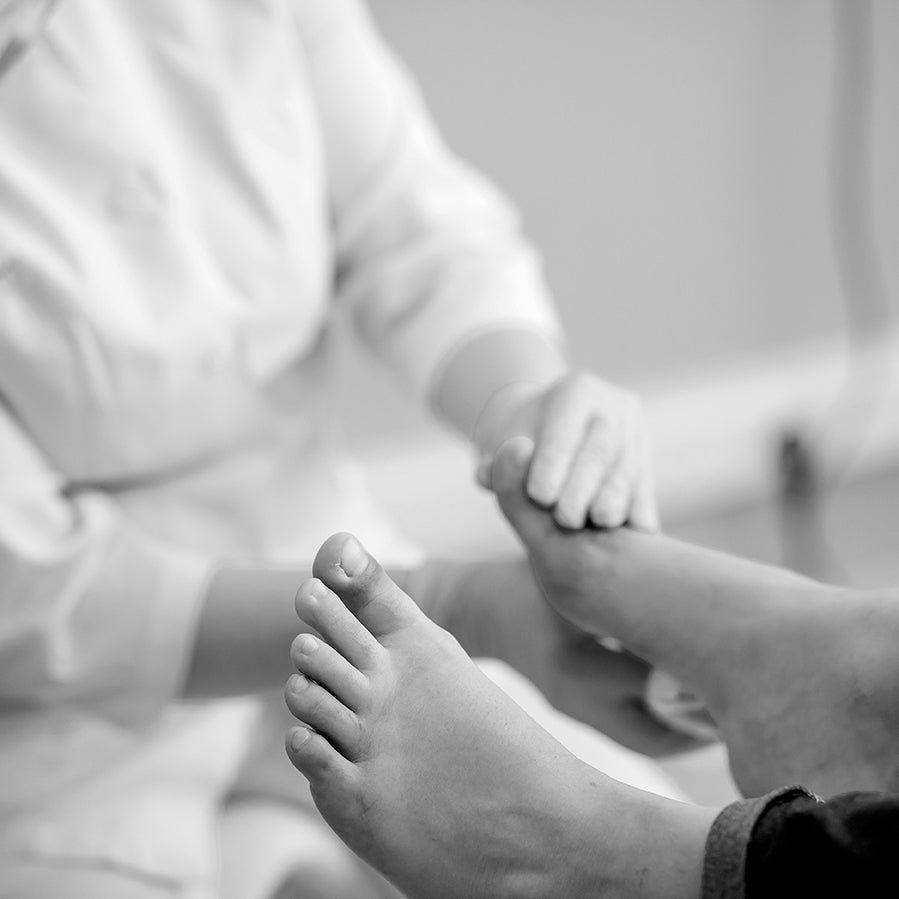Ga direct naar de productinformatie


dr Laurent Goubau
Lees deze informatie als u diabetes heeft.
- Niet roken.
- Controleer uw voeten dagelijks op blaren, snijwonden en krassen. Gebruik een spiegel om de onderkant van uw voeten te bekijken. Controleer ook altijd tussen uw tenen.
- Was je voeten dagelijks. Droog ze zorgvuldig af, vooral tussen de tenen.
- Vermijd extreme temperaturen. Test het water met uw hand of elleboog voordat u gaat baden.
- Als je voeten 's nachts koud aanvoelen, draag dan sokken. Gebruik geen kruiken of warmtekussens. Week je voeten niet in heet water.
- Loop niet op hete oppervlakken, zoals zandstranden of op het beton rondom zwembaden.
- Loop niet op blote voeten.
- Gebruik geen chemische middelen om likdoorns en eeltplekken te verwijderen. Gebruik geen likdoornpleisters. Gebruik geen sterke antiseptische oplossingen op uw voeten.
- Gebruik geen plakband op uw voeten.
- Controleer dagelijks de binnenkant van uw schoenen op vreemde voorwerpen, spijkerpunten, gescheurde voeringen en ruwe plekken.
- Als u een verminderd gezichtsvermogen heeft, laat dan dagelijks een familielid uw voeten controleren, uw nagels knippen en eeltplekken verwijderen.
- Week uw voeten niet.
- Gebruik voor droge voeten een heel dun laagje smeerolie, bijvoorbeeld babyolie. Breng dit aan na het baden en afdrogen van de voeten. Smeer de olie of crème niet tussen de tenen. Raadpleeg uw arts voor gedetailleerde instructies.
- Draag goed passende kousen. Draag geen gerepareerde kousen. Vermijd kousen met naden. Vervang de kousen dagelijks.
- Draag geen kousenbanden.
- Schoenen moeten comfortabel zitten bij aankoop. Verwacht niet dat ze uitrekken. Schoenen moeten van leer zijn. Loop schoenen geleidelijk in.
- Draag geen schoenen zonder kousen.
- Draag geen sandalen met teenslippers tussen de tenen.
- Neem in de winter speciale voorzorgsmaatregelen: draag wollen sokken en beschermend schoeisel, zoals laarzen met een fleecevoering.
- Knip je nagels recht af.
- Snij geen likdoorns en eeltplekken weg. Volg de speciale instructies van uw arts.
- Vermijd het over elkaar slaan van uw benen; dit kan druk op de zenuwen en de bloedvaten veroorzaken.
- Ga regelmatig naar uw arts en laat bij elk bezoek uw voeten onderzoeken. benen; dit kan druk op de zenuwen en de bloedvaten veroorzaken.
- Neem onmiddellijk contact op met uw arts als u een blaar of wondje op uw voeten krijgt.
- Zorg ervoor dat u uw arts vertelt dat u diabetes hebt.